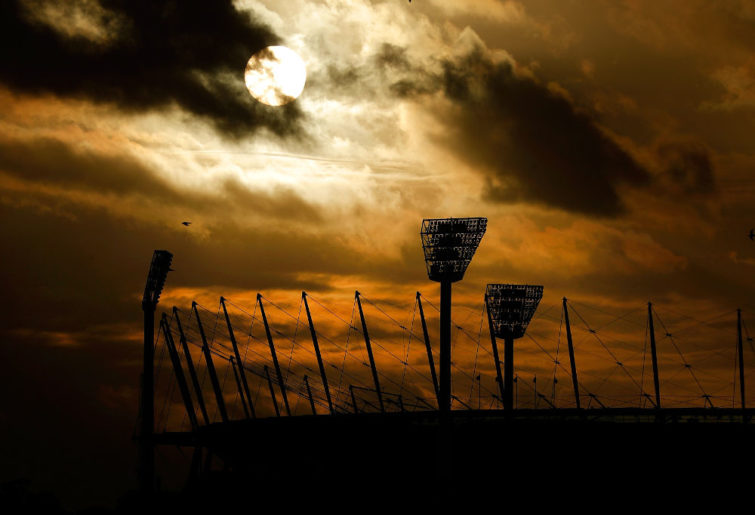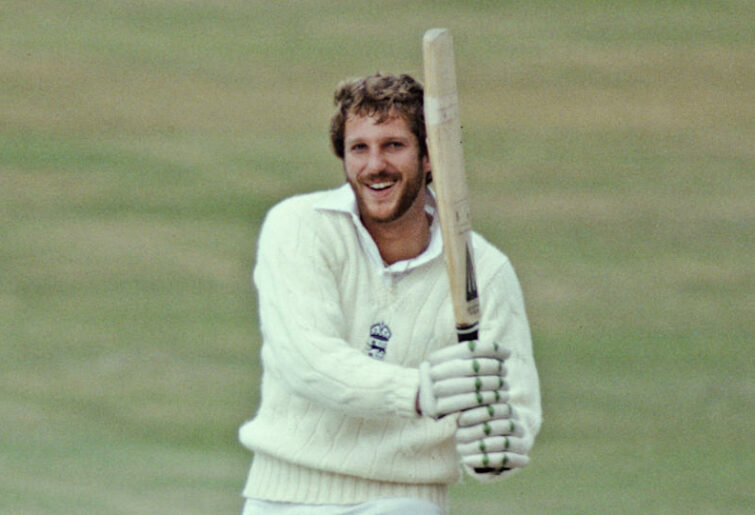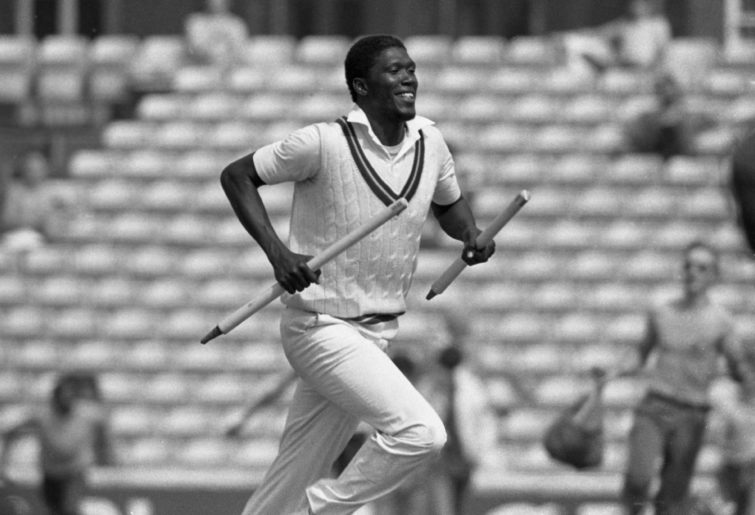The possibiliy of Jofra Archer's career coming to an early end will rob cricket of a bowler with so much talent
While a premature retirement isn’t the solution, he or England want, he may be forced into it if he can’t maintain a long run of matches.
Opinion
1977 was a special year for me, and it was special for the cricketing world as well.
To begin with, I fell in love with the game of cricket as my dad took me to the Dacca stadium in January to watch the historic match between Bangladesh and MCC. There I learnt the basics of the game.
In March came the Centenary match at the MCG, in July Bangladesh became an associate member of the ICC. But without doubt the biggest talking point of the year for the cricket lovers was Kerry Packer’s World Series Cricket, which briefly threatened to completely change the traditional cricket structures.
Interestingly, Packer’s intervention greatly helped me in forming this team. Australia alone provided me with 15 debutants. However, not all of them were of the highest quality. Still, half of the players in my team here are from Australia.
A couple of Englishmen made their debut on the New Year’s Day at Calcutta, but it was a Cheshire-born lad making his debut in July who had much greater impact in England’s cricket fortunes. Elsewhere, the West Indies found couple of more than useful quickies, and Pakistan found a top-class leggie.
I will start with a batsman who enjoyed his best moments at the MCG in the centenary match.
Derek Randall (England)
The problem with Randall was that the England selectors were never sure about his proper position in the batting. His techniques were suited for batting at five or six, but he did play couple of 150-plus innings against Australia batting at number three.
He also opened on a few occasions, and it his 105 as an opener that helped England beat Pakistan at Edgbaston in 1982.
John Dyson (Australia)
Despite his impressive first-class batting average of 40, Dyson from NSW mostly struggled at the highest level. A batting average of 26.6 with a strike rate of 33 is pretty ordinary. He managed only two Test hundreds, the first one – a patient 102 at Headingley in 1981 – was overshadowed by the final-day drama.
Perhaps his greatest moment in international cricket came at the SCG in 1982 when he took the catch of century to dismiss Windies quickie Sylvester Clarke.

(Michael Willson/AFL Media/Getty Images)
Harron Rasheed (Pakistan)
Rasheed from Karachi made his Test debut at the SCG in 1977 and he made an immediate impact. On the second day it was the fifth-wicket stand between Rasheed and Asif Iqbal that gave the Pakistan innings the momentum after Imran Khan’s brilliance on the opening day. Haroon’s contribution was 57.
In the tour to the West Indies that followed, Rasheed showed plenty of grit against the short-pitched stuff, but it was in the home series against England in 1977-78 that he reached the pick of his career. His 122 at Lahore was followed by 108 at Hyderabad. At this stage, there were comparisons with Wally Hammond and there were rumours that the Packer agents were after him.
His 33 runs in five innings during the wet summer in England in 1978 ended all the hype and the rumours. After this tour, he was never a regular in the Pakistan Test team.
Kim Hughes (Australia)
Hughes had an international career lasting almost eight years – relatively short in modern standards. But it was an eventful one. After scoring only one in his debut at the Oval, he scored a fine 129 at the Gabba in his next Ashes Test. He led Australia to victory against Pakistan at the WACA in just his 11th Test. After the return of the Packer cricketers, he was made the vice-captain as part of the compromise deal.
Lord’s 1980, the SCG in early 1981 when he scored a double hundred against India, the Boxing Day Test at the MCG in 1981 and a fighting hundred on the final day against Abdul Qadir at the Adelaide Oval in 1983 were the highlights of his career.
But his captaincy in England (1981), Pakistan (1982) and home and away against the West Indies in 1984 came for harsh criticism. Opinions were divided following his tearful resignation from captaincy. He had both his sympathisers and critics within the cricketing circles. His international career ended at Sharjah, in April 1985.
David Hookes (Australia)
“In truth, Hookes had always been a first-class destroyer of second-rate bowling” wrote Gideon Haigh in Wisden. I find it hard to agree with these views, given how well he faced some of the fastest bowlers in world cricket during his WSC days, and not all the wickets in WSC cricket were tailor-made for batting either.
Along with the Chappells, he formed the backbone of the Aussie rebels’ batting line-up. He stood up against the quickies in the most fearless manner, despite having his jaw broken by Andy Roberts in 1977.
In official Tests, his only Test hundred (143*) came in Kandy against Sri Lanka in 1983, but most people remember him for his 56 from 69 balls on the third day of the centenary match at the MCG. At one stage he hit Tony Greig for five consecutive fours. “I made Tony Greig famous,” he once famously quipped.
He enjoyed considerable success at first-class level, averaging almost 44 with the bat. The highlight was a 34-ball hundred against Victoria for South Australia in 1982.
Sir Ian Botham (England)
Making his debut at Trent Bridge in July, Botham wasted no time in making his mark. His 5-74 instigated an Australian collapse on the opening day, leading to a comfortable England win. His 5-21 combined with a Geoffrey Boycott hundred led to England clinching the Ashes in the next Test at Headingley.
Both Boycott and Botham were integral parts of England’s highly successful era under Mike Brearley, but they were not exactly great buddies. The carefree attitude of Botham was in direct contrast to Boycott’s ultra-serious approach to the game.
Headingley 1981 can be a classic example. In England’s second innings, Boycott took 141 balls for his 48, while Botham faced 148 balls to score 149*.

(Photo by Adrian Murrell/Allsport/Getty Images/Hulton Archive)
Starting from 1977, England pretty much dominated the Ashes rivalry until 1989 and Botham was a very big factor in it. He was in the twilight of his career when he made his last Ashes tour in 1986-87. Still, he scored a ton at the Gabba, and then took a five-for on Boxing Day at the MCG.
Steve Rixon (Australia)
Rixon from NSW had the unenviable task of replacing Rod Marsh in the establishment Australian team in late 1977. He made a good start, taking 22 catches and making valuable contributions with the bat in the five-Test series against India. But then he struggled in the Caribbean islands in 1978, and lost his place.
He got a brief recall in the post Lillee-Marsh era, but failures against Clive Lloyd’s men in the 1984-85 season ended his career. Soon, he joined the rebel party to tour South Africa.
Mick Malone (Australia)
With the immediate fate of the Ashes already decided, the Aussies gave debuts to two WA players, Kim Hughes and Mick Malone, for the dead rubber at the Oval. Sharing the new ball with Jeff Thomson, he took 5-63 and 1-14 in the match. He scored 46 in his only Test innings, sharing a 100-run stand with Max Walker for the ninth wicket.
He joined WSC and never represented the baggy greens again in Test matches.
Abqul Qadir (Pakistan)
He struggled a bit in his debut Test at Lahore in mid-December, taking 1-82. Bob Willis, the last man out, was his only dismissal. Yet in the very next Test at Hyderabad, Qadir appeared unplayable, taking 6-44 in the first innings, and only a typically obdurate century by Geoff Boycott in the second innings saved England there.
Despite this early success, Qadir remained a fringe player until Imran became captain in 1982. Imran succeeded in bringing out the best out of him and over the next few years, Qadir remained a prominent and at the same time slightly controversial character within the Pakistan team.

(S&G/PA Images via Getty Images)
In the 1980s he was the only top-quality expert in the almost dying art of leg-spin bowling. Shane Warne took over from him in the 1990s.
Colin Croft (West Indies)
Croft made his debut against Pakistan at Bridgetown, and made an immediate impact. Sharing the new ball with Andy Roberts he produced figures 3-85 and 4-47. On the final day Roberts and Croft batted together to deny Pakistan victory. Chasing 306, the home side finished at 9-251.
It was the next Test at the Queen’s Park Oval that the world first learnt fully about the fast and furious Colin Croft. His 8-29 on the opening day on a flat track still remains the best bowling figures in an innings for a Windies quickie. He finished the five-match series with 33 victims. Not surprisingly he got a contract from WSC.
After returning from the Packer circus, he became a part of the most hostile four-pronged pace attack seen in world cricket until then. Injuries, fierce competition for places in the team, and his participation in a rebel tour to South Africa meant that he played only 27 Tests for the West Indies, taking 125 wickets.
Joel Garner (West Indies)
‘Big Bird’ made his debut in the same Test as Croft. He came as the first-change bowler, a role he would have to play for a considerable part of his illustrious career. While Croft came good at Port of Spain, Garner showed his best in the next Test at Georgetown, taking eight wickets in the match, and only a brave 167 by opener Majid Khan saved Pakistan.

(Mark Leech/Getty Images)
Garner wasn’t always express fast, but his height meant that the batsmen facing always knew that the balls rising sharply from just short of length would be the norm rather than an aberration with him in the bowling crease.
His Test record of 259 wickets at 21 apiece would look even more impressive if we consider the fact that he never got the new ball in Tests until the 1984 home series against Australia. With Roberts retired and Micheal Holding slowing down, Garner and Malcolm Marshall – the two Bajans – formed one of the most dreaded new-ball attacks in world cricket.
12th man: Len Pascoe (Australia)
Pascoe made his debut at Lord’s in 1977, sharing the new ball with his old school buddy Jeff Thomson. He was genuinely quick, consistently bowling at 90-plus miles per hour. He took 64 wickets in his 14 Tests. His involvement with WSC and his persistent knee injury denied him a longer Test career. His only five-wicket haul in Tests came at Lord’s in 1980. He took 5-59 in the England first innings.
The other players
Peter Toohey did everything right in the first five months of his Test career, starting with a couple of 50s in his debut Test at the Gabba against the Indians in December. But then the highly professional English bowlers sorted him out during the Ashes summer of 1978-79.
Tony Mann, from Western Australia, scored a ton on the final day at the WACA, coming to the crease as a night-watchman to help his team in a successful run chase against India. But he failed to impress in his main role of a leg spinner.
Wayne Clark, also from WA, did a decent job as a new-ball bowler, taking 44 wickets in ten Tests.
Yajurvindra Singh, from the former royal house of Bilkha in Gujarat, played four Tests for India. A brilliant fielder, especially in the short-leg region, he equaled two fielding records in his debut match at Bangalore against England in January.
He took five catches in the first innings to equal the record set by the Australian Vic Richardson four decades ago. He added two more catches to get his name alongside Vic’s grandson Greg Chappell in the record books.
Ajinkya Rahane now holds the record with eight catches in a match.